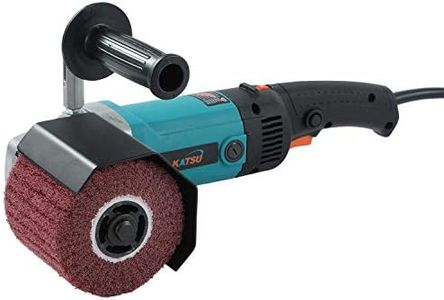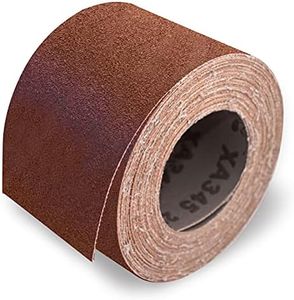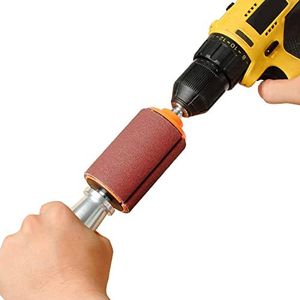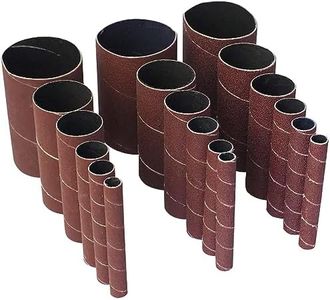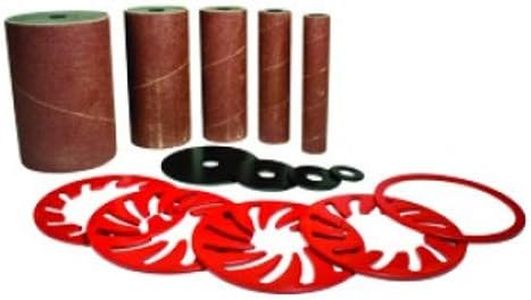We Use CookiesWe use cookies to enhance the security, performance,
functionality and for analytical and promotional activities. By continuing to browse this site you
are agreeing to our privacy policy
5 Best Drum Sanders
From leading brands and best sellers available on the web.Buying Guide for the Best Drum Sanders
Choosing the right drum sander is important for anyone looking to achieve smooth, even finishes on wood or other materials. A drum sander saves time and delivers professional results, but not all models are alike. To make an informed decision, it's important to understand the key features, what they mean, and how they relate to the work you plan to do. By focusing on your own project requirements, you can select a drum sander that offers the right blend of power, convenience, and capacity.Drum WidthThe drum width is the maximum width of material the sander can handle in a single pass. This spec is important because it affects the size of projects you can complete efficiently. Smaller drum widths—typically under 16 inches—are suited for hobbyists or those working on small panels and boards. Medium-sized drum widths—roughly 16-22 inches—offer more flexibility for furniture makers or people often working with mid-sized pieces. Larger drum widths—over 22 inches—are necessary for professionals or those handling large tables, doors, or panels. You should choose a drum width that matches the largest pieces you expect to sand regularly, as oversized workpieces would otherwise need to be sanded in multiple passes, making the process slower and less precise.
Motor PowerMotor power, usually measured in horsepower (HP) or amps, determines how efficiently the sander can remove material and how well it handles demanding work. Low-power motors (under 1.5 HP) are typically enough for light sanding or smaller jobs. Mid-range motors (around 1.5–2 HP) offer a good balance for most woodworking tasks and occasional heavier use. High-power motors (over 2 HP) are best for frequent, heavy-duty use, such as sanding hardwoods or continuously handling wide boards. Choose a sander with a motor powerful enough to meet the demands of your usual projects without bogging down or overheating.
Feed RateFeed rate is the speed at which the conveyor moves the workpiece under the sanding drum, usually measured in feet per minute (FPM). A variable feed rate lets you adjust the pace based on the material type and thickness. Slower feed is ideal for delicate or highly figured woods to avoid burning or tearing, while faster rates are good for quick material removal on tougher woods. For versatility, look for a sander with adjustable feed to fine-tune performance for each job you undertake.
Dust Collection CompatibilityDrum sanders create a lot of fine dust, so good dust collection is essential for safety and keeping your workspace clean. Some sanders have built-in dust ports designed to connect easily to shop vacuums or external dust collection systems. Larger ports typically provide better airflow and more effective collection. Make sure the dust collection setup of the drum sander matches what you have or plan to use, especially if you do a lot of sanding. Effective dust collection also helps prolong machine life and improves finish quality.
Adjustability and ControlsThe adjustability and controls refer to how easily you can set the sanding depth and make minor adjustments during sanding. Some units offer simple dials or levers, while others have more precise, calibrated systems. Fine adjustability is especially important for achieving consistent thickness and a high-quality finish. If you need maximum precision for detailed work or fine woodworking, look for models that offer fine depth increments and easy-to-use controls.
Size and FootprintSize and footprint refer to how much space the drum sander will occupy in your workshop. Benchtop drum sanders are compact, ideal for limited spaces and lighter work. Floor-standing models are larger, heavier, and designed for continuous or professional use. Consider your workspace, how often you'll move the machine, and available storage. Choose a sander that comfortably fits your area and matches the frequency and scale of your intended use.
